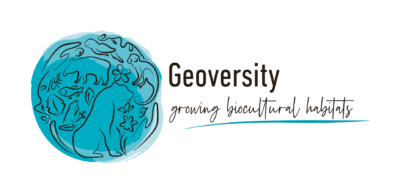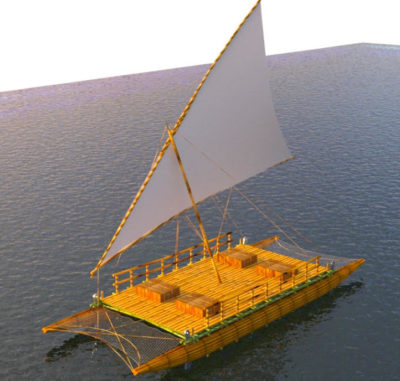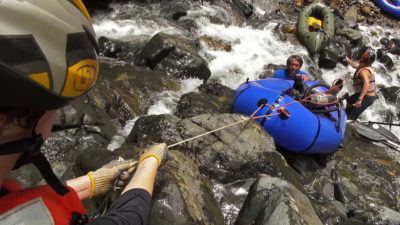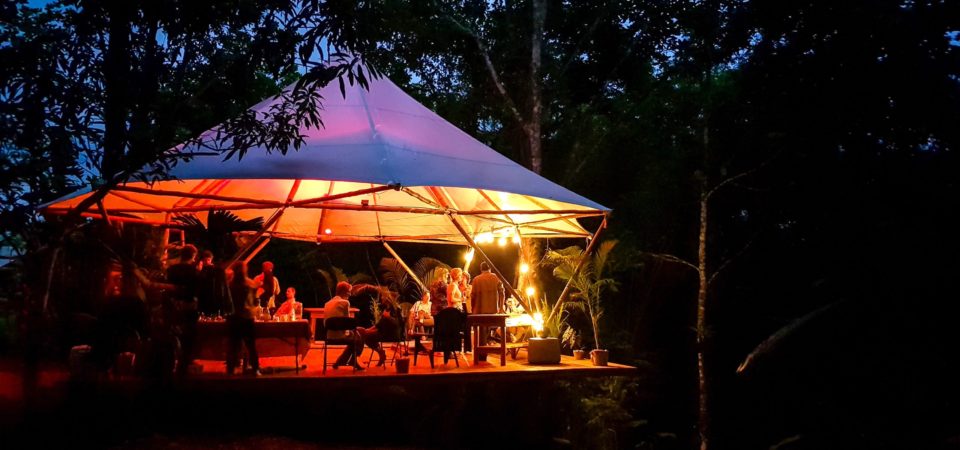
This is the first blog in a new blog series by Geoversity
The artist and the scientist share a gift in their abilities to discern in a single drop of water or in a passing moment the awesome complexity of life and matter. Recently, we met to plan the 30th anniversary of Geoversity (neé Earth Train) and the 20th anniversary of the Mamoní Valley Preserve, our 12,500-acre nature campus in Panama when someone asked me, “why Geoversity?” I guess that the artist in me was on duty as my mind immediately went to a single moment in our history, one that captured the essence of Geoversity.
It was an evening in November of 2011 when we had 40 people from twelve countries gathered for storytelling around the steel fire pit in our great open-air dining hall at Centro Mamoní, our science center on the edge of the Preserve’s rainforest conservancy. We were hosting the leaders of Jane Goodall’s Roots & Shoots organizations of the Americas for five days of intense strategizing and challenging hikes in the forest. There, joining Jane sitting cross-legged on the floor, were young leaders from indigenous nations, north and south, from Haiti, rural Bolivia, and elders, including the former secretary-general of the Guna General Congress. Suddenly, the 16-year-old girl from Argentina who had yet to speak to the whole group, stood up and, channeling Violeta Parra, dazzled us with a rousing call to unity and action.
In that single moment of unscripted joy, one sees the “what” of Geoversity: biological and cultural diversity, radical inclusion and cooperation, a mission of biocultural renewal and youth leadership grounded in a natural place protected and nurtured with volunteer persistence and courage. And one sees the “why”: Geoversity offers – in mission, place and spirit – a context for what physicists call “emergence,” something greater than the sum of its parts. Geoversity provides a seedbed for breakthroughs in biocultural leadership needed, as a group of youth leaders recently put it, “to go beyond the future we’re getting to create the world we want.”
So how are we going to celebrate our upcoming anniversaries? We’re getting ready to do something unusual, something befitting our extraordinary Earth Train-to-Geoversity history and our newly established Geoversity School of Biocultural Leadership (GeoSchool).
Earth Train was founded by youth leaders from North America and formally launched in 1991 by Sweden’s Claes Nobel during his Earth Prize ceremony at the UN General Assembly Hall before 2,000 diplomatic, business, civic, and youth leaders. For its youth-calling-youth-to-action 10-year campaign, Earth Train operated actual trains for transcontinental whistle-stop events, television, radio, and internet broadcasts. Earth Train provided unforgettable learning experiences – youth-led and international workshops, expeditions, and conferences for thousands of young people with popular outreach to millions worldwide. Our emphasis on experiential learning, a coaching relationship between experienced and emerging leaders, and peer-to-peer teaching proved effective as youth helped youth realize their leadership potential.
During our campaign decade, Earth Train served numerous youth organizations around the U.S. and in 40 countries and native nations. Rather than building up a bricks-and-mortar organization, we focused instead on helping young leaders, many still in their teens, launch ambitious environmental and social justice initiatives and organizations, such as the Global Youth Action Network that today has over 200,000 active members worldwide.
At the end of 2000, as we began to consider establishing our permanent international base, our Guna friends urged us to come to Panama. Within a day of our arrival, they brought us to a hidden valley located on the vulnerable southern border of their autonomous territory, where we saw why they hoped we might base our programs there. In the watershed of the upper Mamoní River, located only two hours east of Panama City, we saw how the area’s river and forest corridors of biodiversity were threatened by rapidly expanding and unsustainable ranching and logging practices. With eyes stinging from the smoldering of forest slash, we observed extreme erosion and streams gone dry, and countless other signs that we had entered an ecological crossroads.
Returning with a team of local, indigenous, and foreign volunteers, we set to work creating a base camp with a mission: Human settlements in and near natural areas that don’t grow like cancerous cells fed by roads. We focused our youth empowerment work on the modeling of alternatives. Driven by a vision of what we called “conservation communities” evolving in harmony with wilderness and watershed zones, we embarked on creating the Mamoní Valley Preserve, Geoversity’s world campus for biocultural leadership.
In February of this year, now seasoned by decades of countless challenges and adventures, we ran The Earth Vision 2020 Transcontinental Journey that brought together accomplished youth leaders and mentors from 10 countries for the launch of the GeoSchool for Biocultural Leadership. Traveling by sailboat, kayak, and bike, they made their way from the Pacific up to the Preserve at the continental divide, and then, by foot and down the river by pack boat onto the Atlantic coast and islands of the Guna people. With this life-changing expedition, they helped us shape GeoSchool’s unique mix of exploration, team building, and experiential learning, now one of the features of GeoYear, our combination gap year/study abroad program for youth leaders. https://spark.adobe.com/page/D7E9m2PPMTrjz/
One of Geoversity’s anniversary events taking place early next year in Panama will be The Earth Vision Ocean Voyage celebrating both biocultural leadership and design for sustainability in harmony with nature. Working under the direction of the bamboo construction legend Jörg Stamm, a co-founder of Geoversity Design, a small team of accomplished youth leaders will build the Bamboo Ark, a large prototype catamaran using bamboo from the Mamoní Valley Preserve for the structure and discarded plastic barrels and bottles inside the two amas (hulls) for extra flotation. The building of the Bamboo Ark is aimed at promoting the intelligent use of green materials and calling attention to plastic contamination of the planet’s rivers and oceans.
The Bamboo Ark, measuring 60 by 30 feet, will be built at the Geoversity Design Center in Amador located next to the Frank Gehry-designed Biomuseo overlooking the Pacific entrance to Panama’s interoceanic canal. Once completed, it will be launched from the Biomuseo waterfront with a day of educational events and festivities and then sailed by the youth leaders east approximately 60 miles into one of the most significant coastal wetlands in the Pacific basin and then they will mountain bike up to the Preserve. The Ark will be docked at Geoversity’s future Wetlands Field Station where it will be used by scientists and students for the collection of specimens and as a floating laboratory. The Ark also represents the beginning of Geoversity’s Design work in the development of watercraft using bamboo, wood, and other locally available and sustainable materials for marine uses benefiting low-income coastal communities in the Americas.

There’s so much more to tell, but I’ll close by saying how much we admire the work the Millennium Alliance and your constituent organizations are accomplishing through real collaboration. Just as we are striving to do, you are creating a context for emergence – for miracles, really. We would be honored to explore how we might join forces with you for great and enduring results. And for some fun and team-building adventures, of course!

Learn more about Geo Year and Geoversity here!
Nathan Gray, Co-Founder and President, Geoversity Foundation www.Geoversity.org

The MAHB Blog is a venture of the Millennium Alliance for Humanity and the Biosphere. Questions should be directed to joan@mahbonline.org
The views and opinions expressed through the MAHB Website are those of the contributing authors and do not necessarily reflect an official position of the MAHB. The MAHB aims to share a range of perspectives and welcomes the discussions that they prompt.
